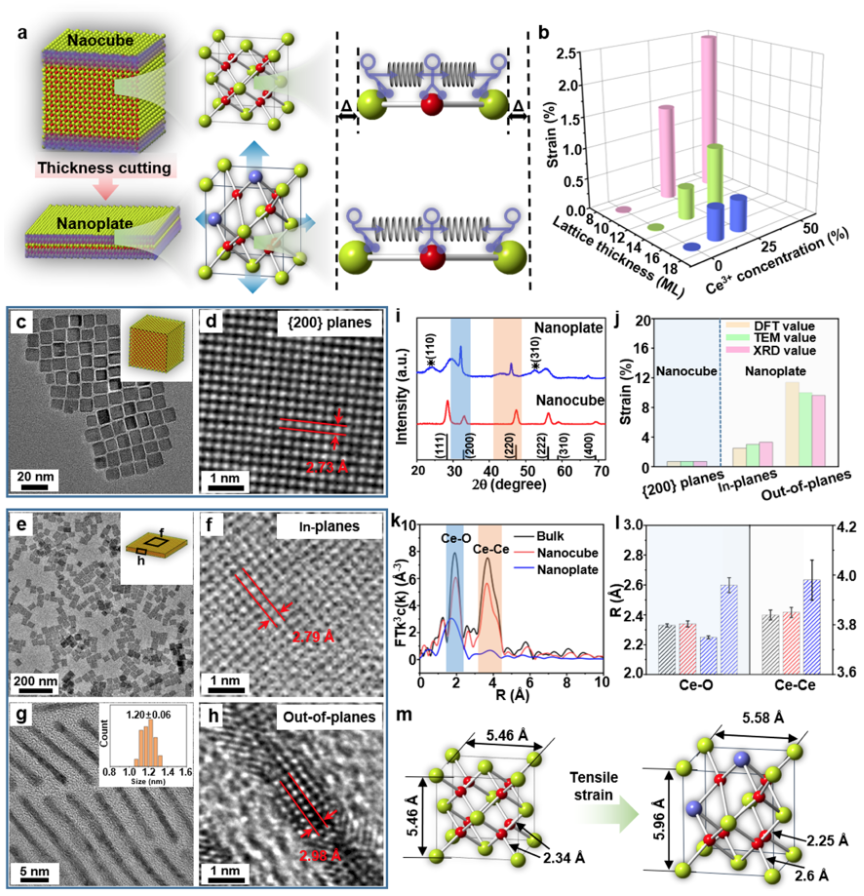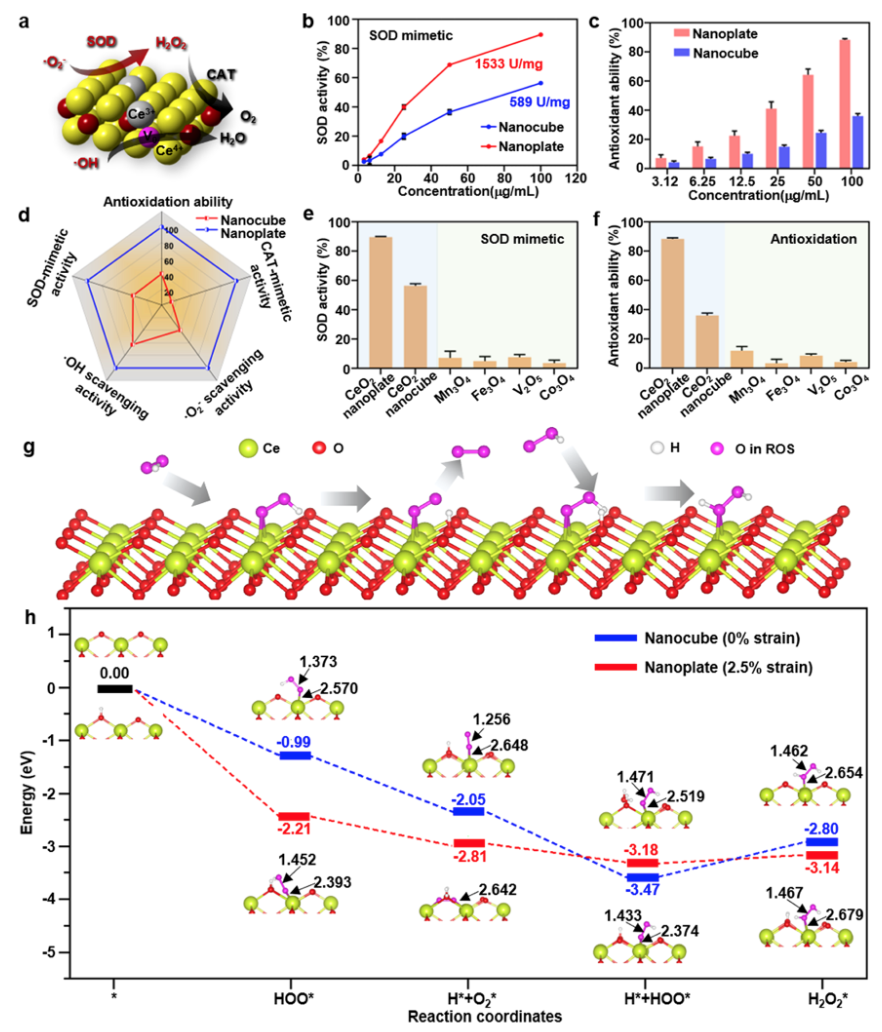
People regard oxide nanoenzymes as the most suitable catalytic materials for simulating the treatment of oxidative stress-mediated pathophysiological disorders by antioxidant enzymes, but the catalytic activity of oxide nanoenzymes is still unsatisfactory.
In view of this, Tang Zhiyong, Wang Hao, Xingxin Fa, Qiao Zengying, and others from the National Nanometer Center have reported for the first time that ultra-thin layered CeO2 with intrinsic stress is used for nano oxidation resistance.

Key points of this article
Key point 1. Through theoretical calculation and analysis, it was found that the surface stress of CeO2 is related to the coordination unsaturation of Ce and the thickness of CeO2. Therefoare, ultra-thin nanosheets with a thickness of~1.2 nm were synthesized, and the in-plane stress/out of plane stress reached~3.0% and~10.0%, respectively.
Key point 2. Compared with nanocubes, this ultra-thin nanosheet Ce-O chemical bond has enhanced covalence, resulting in a 2.6 fold increase in simulated SOD (superoxide dismutase) catalytic activity and an overall 2.5 fold increase in antioxidant capacity. Applying this ultra-thin CeO2 film with intrinsic stress to treat ischemic stroke in vivo has better performance than traditional clinical drugs

Post time: Sep-08-2023